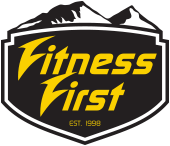The numerous myths and misconceptions surrounding strength training are almost impossible to count. The following information is intended to debunk these myths.
Strength training is only for men
- While it is extremely beneficial and important for men to strength train, it is equally or even more important for women. After menopause, women lose bone density and become more susceptible to osteoporosis and bone fractures. Strength training helps slow this decline in bone density and delays the progression of osteoporosis. Along with this, strength training helps to slow muscle loss which can aid in improving balance and preventing the risk of falling.
Strength training is dangerous
- Strength training is completely safe if it is done correctly. Form and technique are two of the most important aspects of training that need to be executed with caution. If exercises are done incorrectly, there is a risk of injuring muscles, tendons, ligaments, and bone. It is recommended that if you are a beginner, you start slow and progress to heavier resistance levels and more difficult exercises with the supervision of a trained professional.
I am too weak to start strength training
- You are never too weak to begin strength training. In fact, strength training can be extremely beneficial if muscles are weak because strong muscles play a large role in balance and flexibility. There are various types of strength training that can be learned that will suit every body type. Body weight training is a great strategy for beginners and can lead into utilizing free weights and machines.
It will make you too bulky
- This is a common concern among women because it is thought that if you start strength training, you will look like the hulk. This is false. Ninety percent of women do not have the physical ability to gain enough muscle mass to make them look “huge”. The reason for this is that women have less amounts of testosterone which is one of the main factors in being able to gain large amounts of muscle. Testosterone has the ability to increase protein synthesis in the body which therefore prompts the muscle fibers to increase and grow in size. Women will still be able to have significant strength gains while not showing an excessively large increase in muscle size due to the hormone estrogen.
Strength training is bad for your joints
- This myth has some validity but only if exercises are performed incorrectly. If done safely and correctly, strength training has been proven to reduce joint pain because the muscles around the joints become more strong and stable. This gives people, especially older individuals, a higher quality of life because they are able to be more mobile and execute daily tasks with ease.
I can target areas that I want to lose fat and tone
- It is impossible to target fat loss in a certain area of the body. If you want to make areas of your body look more “toned”, you have to be in a calorie deficit. However, everyone’s bodies lose fat more quickly or slowly in different areas and it is difficult to tell where it will be noticeably reduced first. Some recommendations for losing body fat in a healthy way to look more toned are participating in full body strength training one to three times per week and eating a healthy diet.
References
Baker, K. R., Nelson, M. E., Felson, D. T., Layne, J. E., Sarno, R., & Roubenoff, R.
(2001, July). The efficacy of home based progressive strength training in older adults with knee osteoarthritis: A randomized controlled trial. Retrieved from https://www.ncbi.nlm.nih.gov/pubmed/11469475
Griggs, R. C., Kingston, W., Jozefowicz, R. F., Herr, B. E., Forbes, G., & Halliday, D.
(1989, January). Effect of testosterone on muscle mass and muscle protein synthesis. Retrieved from https://www.ncbi.nlm.nih.gov/pubmed/2917954
Sole-Smith, V. (2019, June 10). 10 Strength-Training Myths You Need To Stop
Believing. Retrieved from https://www.prevention.com/fitness/a20484013/10-strength-training-myths/
Strength Training Myths. (n.d.). Retrieved from
https://www.urmc.rochester.edu/encyclopedia/content.aspx?contenttypeid=1&contentid= 1492
